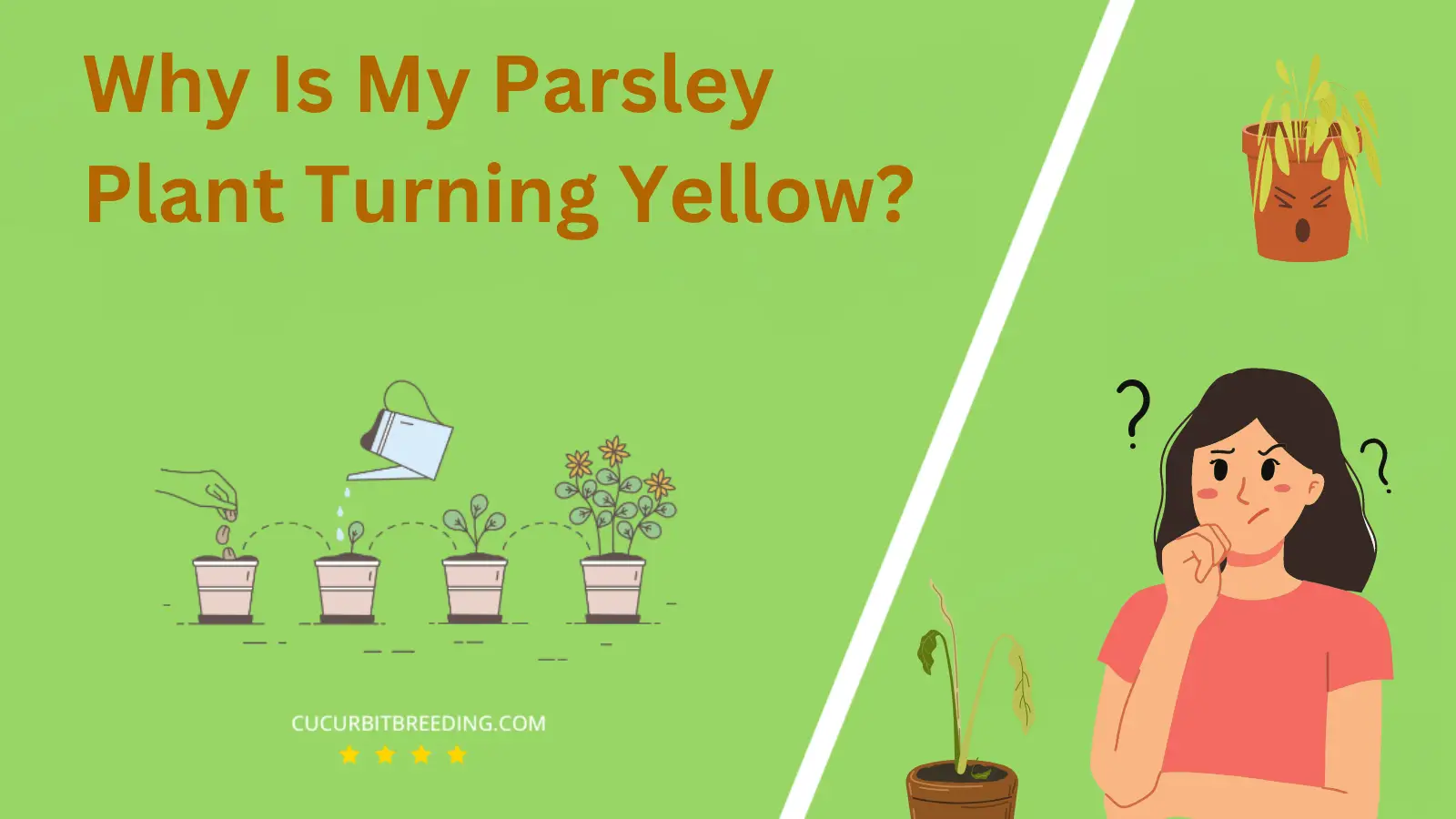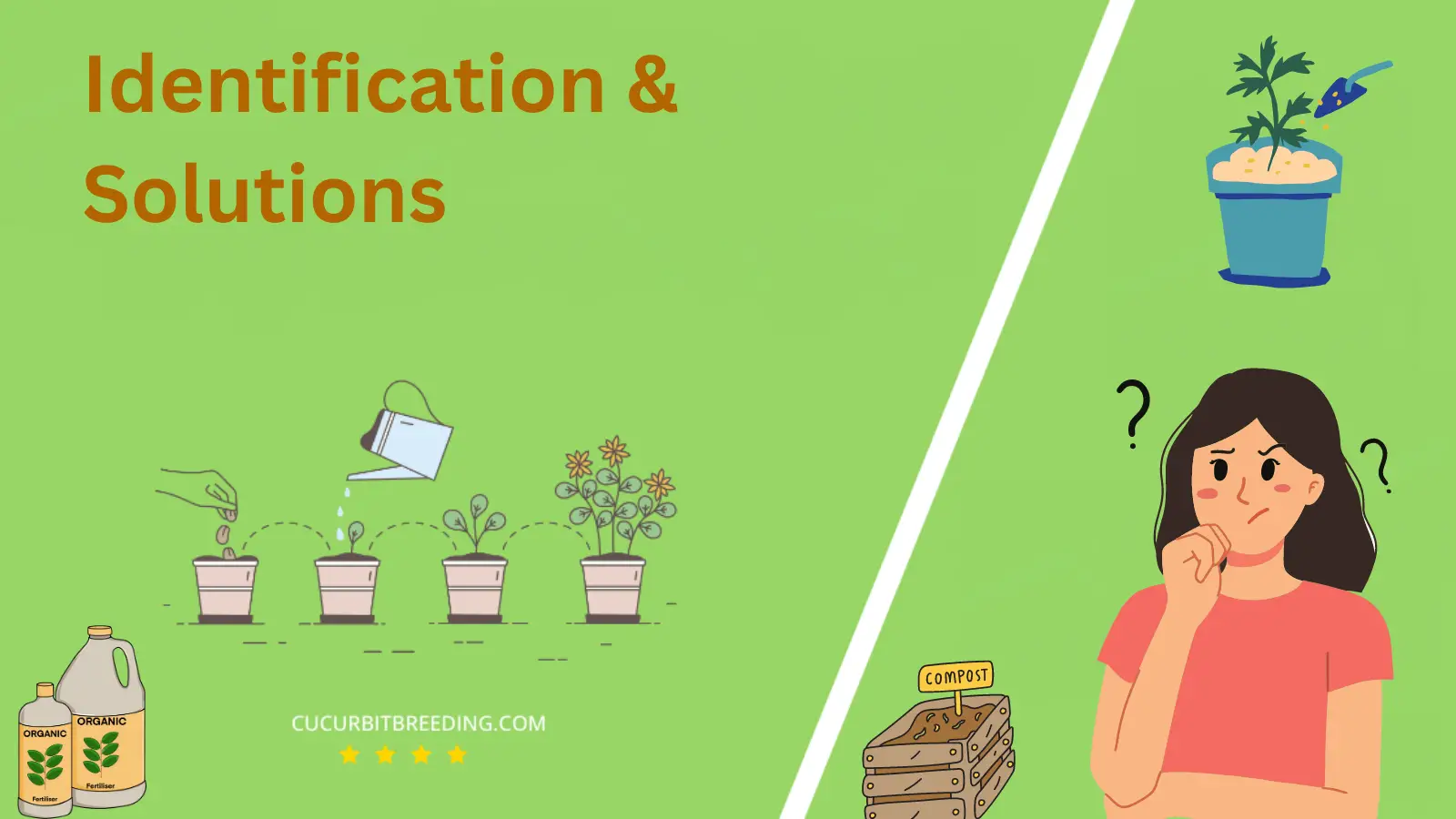
Does your outdoor sanctuary seem a bit off lately with your parsley plant turning yellow? This common culinary herb might be giving you a signal that something’s not quite right.
We often underestimate the delicate balance that plants require, assuming they merely need sunlight and water. But plants, like our beloved parsley, can be a great communicator of the health of your garden.
Why Is My Parsley Plant Turning Yellow?
1. Lack of water
| Description | causes the chlorophyll in the leaf to break down, resulting in a yellow color. |
|---|---|
| Solution | Water the plant regularly to prevent dehydration and maintain its healthy green color. |
The issue of lack of water is a common reason why parsley plants may turn yellow. Watering inconsistency can cause stress to the plant, leading to discoloration of leaves. When the plant does not receive an adequate amount of water, it fails to perform photosynthesis efficiently. This leads to a loss of chlorophyll, the pigment responsible for the green color, hence the yellowish appearance.
Regular watering is essential in solving this problem. The soil must always be kept moist but not waterlogged. Always ensure the water reaches the root level to facilitate efficient uptake. If possible, water the plant early in the morning or late in the evening to minimize evaporation. Keeping a consistent watering schedule can significantly improve your plant’s health and retain its vibrant green color. More so, implementing a well-drained soil system helps in preventing water stagnation that may cause root rot. Consider using organic mulches around the root area to retain moisture within the soil. Always remember that the needs of the plant may vary with changes in weather and season.
2. Nutrient deficiency
| Description | causes leaves to turn yellow as the plant lacks essential nutrients for proper growth. |
|---|---|
| Solution | Provide the plant with proper nutrients to address the yellowing of the parsley plant. |
Parsley plants can turn yellow due to a nutrient deficiency. Nutrient Deficiency in plants can be compared to malnutrition in humans. It implies that the plant is not receiving the necessary nutrients it requires to grow healthy and perform its metabolic activities appropriately. This can lead to many issues including yellowing leaves.
Many soil nutrients play a key role in maintaining the green color of plants. The most critical being Nitrogen, Iron, Magnesium, and Potassium. If parsley plants don’t get these nutrients sufficiently, they may start losing their vibrant green color and turn yellow.
To resolve this issue, Corrective Measures should be undertaken. First, determine which nutrient is deficient. Yellowing leaves usually point towards Nitrogen deficiency, but also, the soil could be lacking Iron, Magnesium, or Potassium. So, the first step is to have a soil test to confirm the deficiency. Afterwards, a suitable fertilizer should be applied. For Nitrogen use a high-Nitrogen mix, for Iron deficiency use Iron Chelate, Epsom salts for Magnesium, and Potassium Sulfate for Potassium deficiency.
Moreover, providing the plant with a good quality organic compost can also be an easy and effective solution to replenish the nutrient content of the soil, naturally. Also, ensure a suitable pH level (6.0 – 7.0) for parsley.
Always Monitor the Health of your plants and look out for any signs of nutrient deficiency to spot and correct them as soon as they arise. Regular care and maintenance of your plants can keep them thriving for years.
3. Overwatering
| Description | Overwatering leads to yellowing of the parsley plant due to nutrient leaching and root suffocation. |
|---|---|
| Solution | Reduce watering to prevent yellowing of parsley leaves. |
Overwatering is one of the major causes of yellow leaves in parsley plants. Overwatering results in waterlogged soil that prevents essential oxygen from reaching the roots of the plant. This lack of oxygen can cause root rot, which leads to the yellowing of leaves.
To save your parsley plant from overwatering, ensure proper watering methods. Provide the plants with moderate watering – enough to keep the soil moist but not waterlogged. Parsley prefers well-drained soil, so incorporate some organic matter into the soil to improve its texture and drainage property.
Avoid watering the plant daily unless the weather is extremely hot or windy. Instead, water deeply once or twice a week. Always check the soil before watering. If the top inch of the soil feels dry to the touch, it is time to water.
Lastly, remember, it is always better to underwater than overwater. The plant can recover from being a bit too dry, but recovering from root rot caused by overwatering is much more difficult.
4. Poor drainage
| Description | Overwatering leads to yellowing of the parsley plant due to nutrient leaching and root suffocation. |
|---|---|
| Solution | Reduce watering to prevent yellowing of parsley leaves. |
Poor drainage can cause your parsley plant to turn yellow. This happens because too much water in the soil can cause the roots to become waterlogged and oxygen-starved. Over time, this causes the roots to suffocate and die, leading to a lack of nutrient uptake. This stress is reflected in the plant’s foliage, causing it to turn yellow.
To fix this issue, ensure that your parsley plant’s pot has sufficient drainage holes. Also, consider changing its soil to a fast-draining variety like a mix of sand, peat moss, and compost. Remember to water the plant only when the top inch of soil is dry to touch. Regularly monitor your plant’s water intake, being careful not to overwater. Soon, your parsley plant should regain its healthy green color.

5. Pests or diseases
| Description | Reduce watering to prevent yellowing of parsley leaves. |
|---|---|
| Solution | Apply insecticide or fungicide and ensure proper watering and sunlight for healthy growth. |
When your parsley plant is turning yellow, it could be due to a pest or disease attack. Pests such as aphids, leaf miners, and caterpillars often feed on parsley plants, resulting in yellowing of the leaves. Additionally, diseases such as leaf spot or bacterial blight could also be the cause of discolouration. These diseases often result in yellow or brown spots, eventually leading to the yellowing of the entire leaf.
For combating the pest problem, you can opt for natural remedies like introducing beneficial insects into your garden which prey on these harmful pests. Regularly inspecting the plants and manually removing the pests also helps. In case of a disease, removing affected parts of the plant is one effective solution. Also, ensuring proper spacing between plants helps to get better air circulation, reducing fungal diseases. Application of appropriate fungicides could also be an effective measure. Remember, a healthy plant can better resist pests and diseases.
6. Excessive sunlight or heat
| Description | causes chlorophyll breakdown, reducing photosynthesis and leading to yellowing of the leaves. |
|---|---|
| Solution | Provide shade or move to a cooler area to prevent excessive sunlight or heat. |
Excessive sunlight or heat can have harmful effects on your parsley plant, leading to it turning yellow. This happens because the parsley plant is unable to deal with too much light or high temperatures, and doing so can cause the cells within the leaves to die off. This is because the holder for chlorophyll (the ingredient that gives plants their green color) within the plant’s cells is damaged, causing the plant to change color from green to yellow.
To resolve this problem, you should attempt to control the amount of sunlight/heat the parsley plant is exposed to. You can do this by moving the plant to a place where it receives indirect sunlight or where the temperature doesn’t exceed 85 degrees Fahrenheit. Also, ensure the plant is properly hydrated as water helps to regulate temperature and nutrients essential for the plant’s health. Regularly monitor the plant to ensure it adapts to the new conditions and make further adjustments if necessary.
7. Aging or natural growth cycle
| Description | During aging or natural growth cycle, chlorophyll production decreases, causing the leaf to turn yellow. |
|---|---|
| Solution | Increase nutrient intake and provide adequate sunlight to promote healthy growth and delay aging. |
The primary reason for your parsley plant turning yellow could be overwatering. Overwatering often leads to waterlogged soil, which in turn deprives roots of the required oxygen, causing them to rot and turn the plant yellow.
To resolve this, you first need to check if the plant’s soil is indeed waterlogged. If it is, adjust your watering schedule or the quantity of water you use each time. Ensure the plant’s soil is well-draining, perhaps by adding coarse sand, peat moss, or perlite.
Besides, if your pot does not have proper drainage holes, consider repotting your parsley to a pot that allows excess water to drain out. Usually, parsley needs water once the top inch of soil drys out.
Remember to continuously monitor your plant for any signs of recovery or further yellowing. Consult with a local nursery or extension service if the condition does not improve.